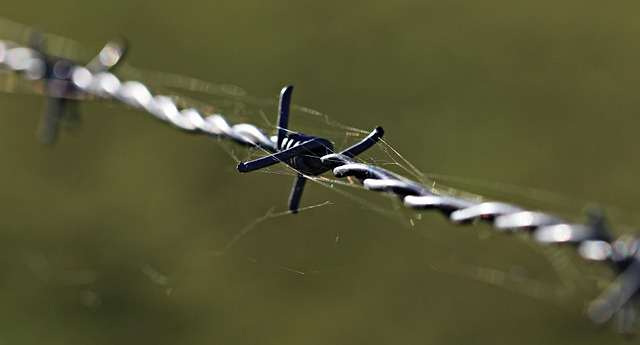Coastal areas present unique challenges for fencing due to harsh weather conditions and corrosive saltwater. This article explores the benefits of durable wooden fencing as a robust and aesthetically pleasing solution for these environments. We delve into the specific materials, design nuances, and maintenance practices that ensure fences withstand salt spray exposure, promoting longevity and minimizing replacement costs. Understanding these factors is key to selecting the ideal fence for coastal properties.
- Understanding Coastal Environment Challenges for Fencing
- Advantages of Durable Wooden Fencing Materials
- Design Considerations for Longevity in Saltwater Exposure
- Maintenance Strategies to Ensure Long-Lasting Performance
Understanding Coastal Environment Challenges for Fencing
The coastal environment presents unique challenges when it comes to installing and maintaining fencing. Salty air, strong winds, and frequent rainfall can accelerate the natural breakdown of materials, making durable fencing solutions essential for any seaside property. Traditional fencing materials like wood may seem like an obvious choice, but they often struggle to withstand these harsh conditions, leading to regular maintenance or premature replacement.
In such environments, ordinary wooden fences can rot, warp, or become infested with pests like termites, all of which require costly repairs or complete replacements. To combat these issues, durable, marine-grade wood treated with preservatives is a preferred option. Additionally, fencing materials designed specifically for coastal areas, such as those made from vinyl or composite materials, offer excellent resistance to moisture and corrosion, ensuring fences remain strong and structural integrity intact for years to come.
Advantages of Durable Wooden Fencing Materials
Durable wooden fencing materials offer an array of advantages for coastal areas, where traditional barriers often face significant challenges from salt air, moisture, and extreme weather conditions. Firstly, wood chosen for its resilience, such as treated cedar or redwood, can withstand these elements better than many other common fencing materials. This longevity not only reduces the need for frequent replacements but also lowers maintenance costs over time.
Additionally, these durable woods have a natural beauty that enhances coastal landscapes. Their warm tones and unique grain patterns blend seamlessly with surrounding environments, providing both functional protection and aesthetic appeal. Furthermore, wooden fences can be customized to fit various designs, allowing homeowners and developers to create distinctive features that complement the coastal setting while offering privacy and security.
Design Considerations for Longevity in Saltwater Exposure
When designing durable wooden fencing for coastal areas, one must consider the unique challenges posed by saltwater exposure. Wood is inherently susceptible to corrosion and deterioration when constantly submerged or in close proximity to salt water. To ensure longevity, careful selection of wood species is crucial; tropical hardwoods like teak or cedar are excellent choices due to their natural resistance to moisture and decay. Additionally, treating the wood with suitable preservatives, such as pressure-treated solutions or oil-based coatings, can significantly enhance its durability against saltwater.
Another design consideration is the choice of finishing products. Applying marine-grade sealers and finishes that are specifically formulated for exterior use, particularly in coastal environments, will protect the wood from salt spray and UV radiation. Regular maintenance, including periodic cleaning and reapplication of these finishes, is essential to mitigate the effects of saltwater over time. Proper drainage and ventilation within the fence design also play a vital role in preventing water accumulation, which can accelerate wood rot and deterioration.
Maintenance Strategies to Ensure Long-Lasting Performance
Proper maintenance is key to ensuring your wooden fencing lasts for years, especially in harsh coastal environments. Regular cleaning is essential; brushing away salt spray and sand buildup prevents rot and decay. A light pressure wash can remove stubborn debris, followed by a water-based preservative to shield the wood from moisture.
Inspection and repair are vital components of maintenance. Check for loose or damaged boards, posts, and rails at least twice a year. Promptly replace any worn or rotten sections to maintain structural integrity. Treating minor issues early can save significant costs down the line and ensure your fencing continues to provide both aesthetic appeal and security for years to come.
